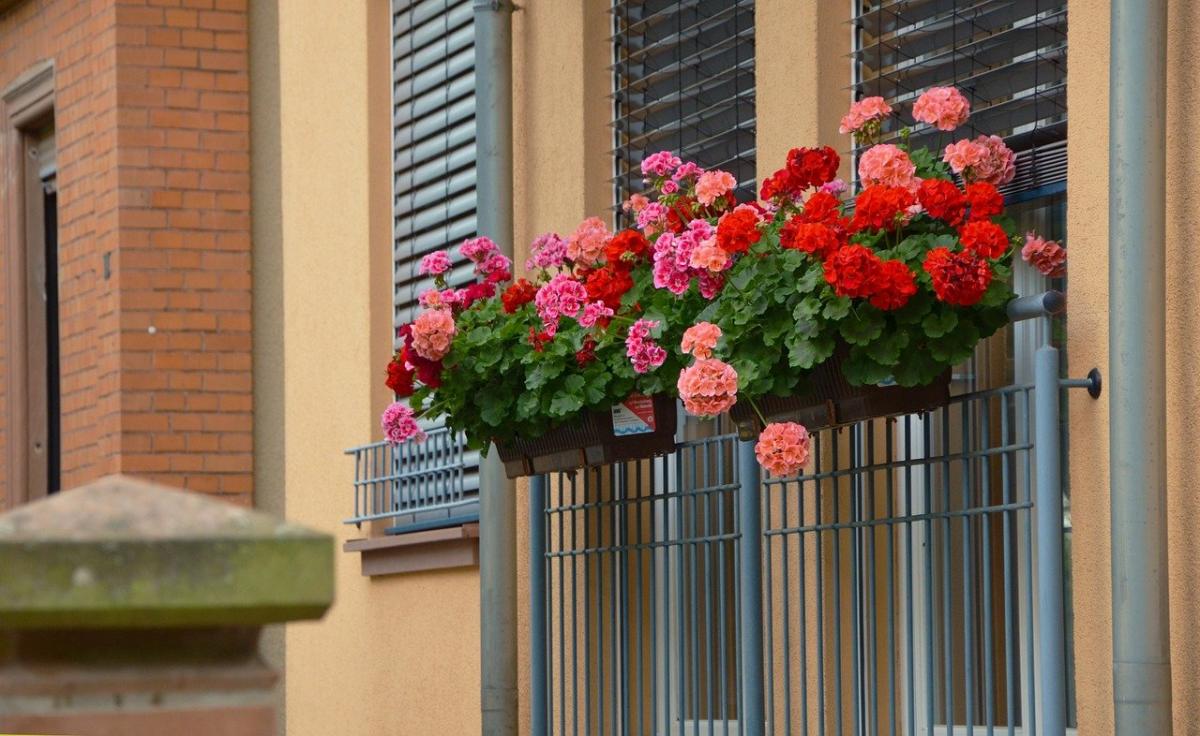
Many people live in flats or houses that have balconies that are not directly exposed to the sun. Although it may seem like a problem, the truth is that it is not at all: there are a wide variety of plants that will be very comfortable there!
What's more, the shady corners, I would almost dare say, are in high demand, even in gardens that are in the process of maturing. So, do you dare to color your balcony? If you don't know how here you have a selection of plants for balconies without sun.
Japanese maple (Acer palmatum)
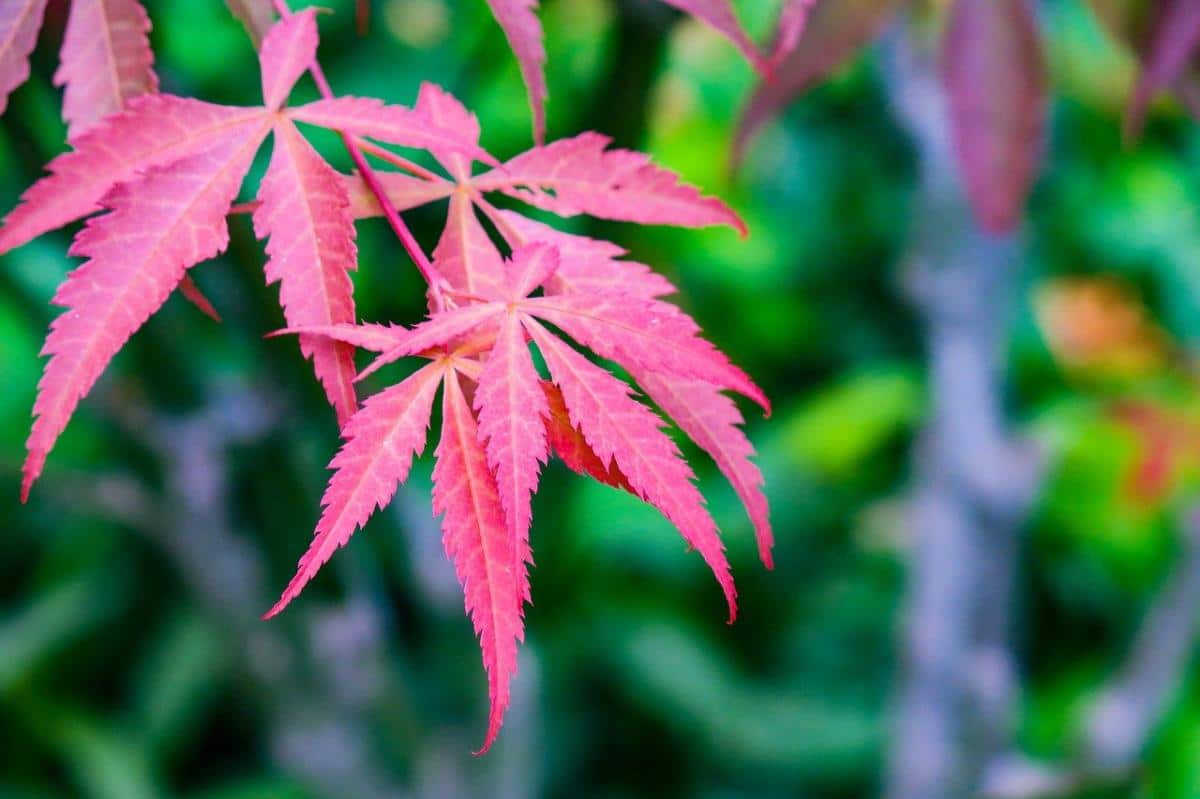
El japanese maple it is a wonder. A real gem (you can tell it's my favorite plant?). There are hundreds of cultivars, and a great variety of them can be grown in pots (I would say that all actually, if they are pruned. But in order not to complicate things, it is better to choose those of low size), such as these:
- Aratama: 1-2 meters high.
- Atrolineare: 2-4 meters high.
- Beni Chidori: 3 meters high.
- Little Princess: 1-2 meters tall.
- Kashima: 1-2 meters high.
They are deciduous trees or shrubs, with palmate leaves, which acquire reddish, yellowish or orange colors depending on the variety in spring and / or autumn. They need shade, as well as a low pH substrate like coconut coir, or a mix of akadama (for sale here) with 30% kanuma.
Irrigation will be frequent during the summer, as they do not resist drought, also with acidic water (it can be rain, or failing that, acidified if necessary with lemon or vinegar). Withstands frosts down to -18ºC, but in tropical and subtropical climates they cannot live since they need to be cold in winter to rest.
Azalea (Rhododendron)
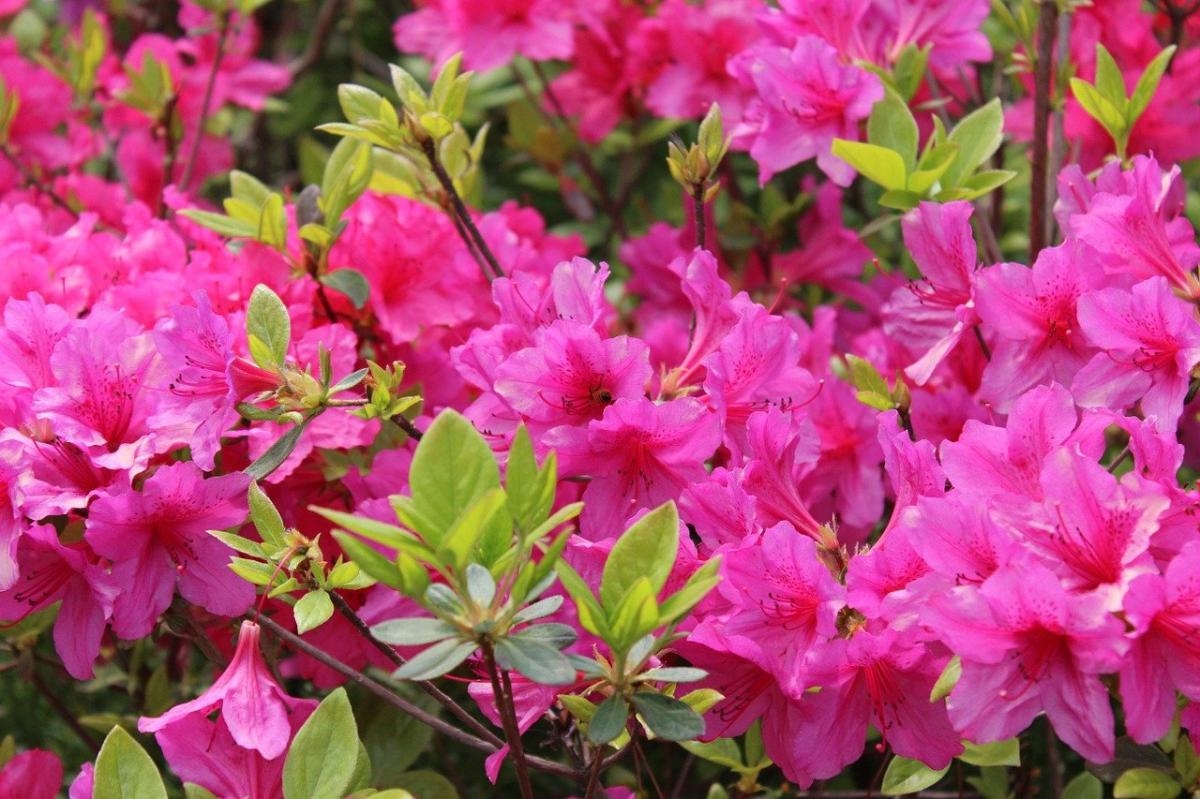
La azalea it is a classic sunless balcony plant. It is rare that it exceeds 2-3 meters in height, but it is also that its growth rate is slow. The leaves can be evergreen or deciduous depending on the variety, although those that are marketed in Spain are practically all evergreen. Its flowers bloom in spring, and are less than two centimeters long. These are red, orange, pink, or white.
Like Japanese maple, it requires an acid substrate and irrigation water. If we talk about the substrate, it is advisable to use a specific one for acidic plants (for sale here), or coconut fiber. On the other hand, in terms of water, it is important that it be rain, but as an alternative you can use one with a pH between 4 to 6. It resists the cold, but it is advisable not to leave it outside if the temperature drops below -2ºC.
False jasmine (Trachelospermum jasminoides)
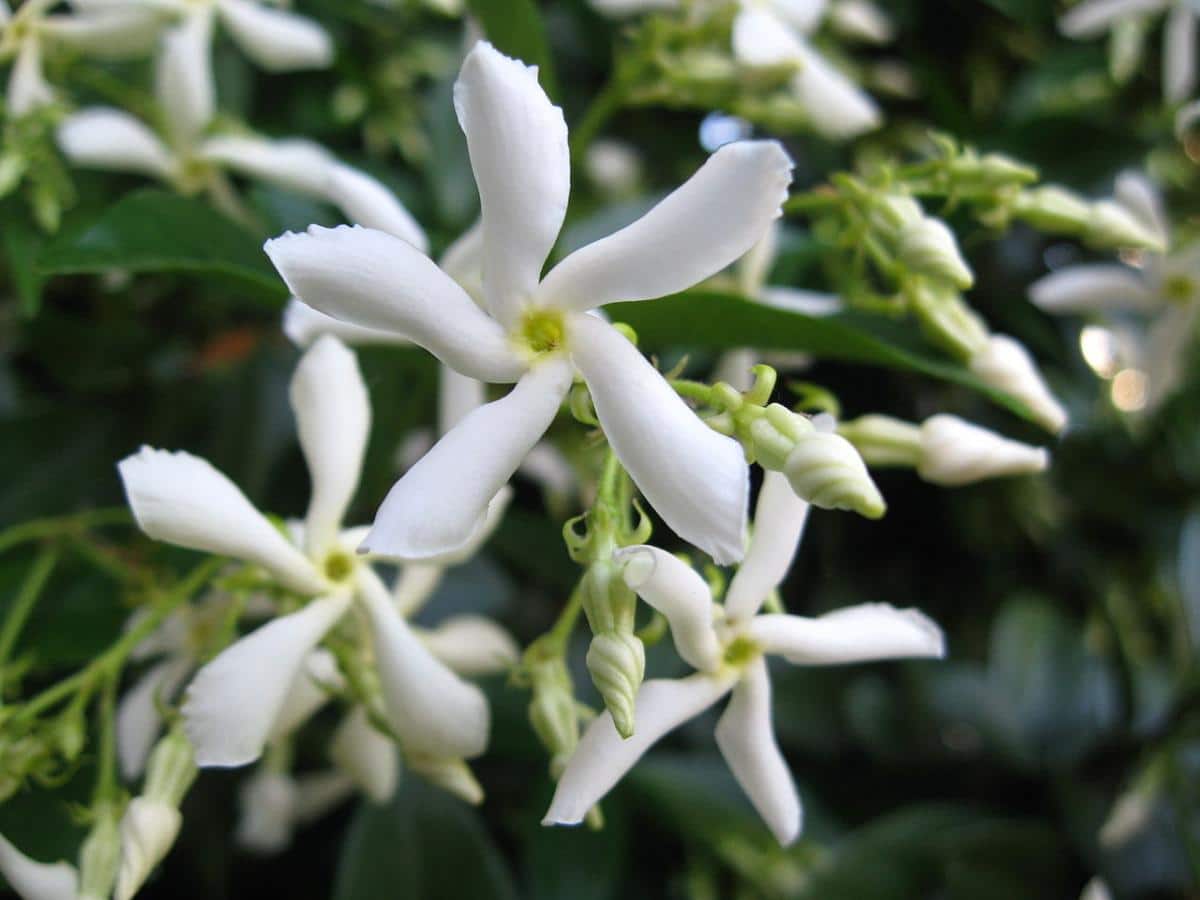
Image - Wikimedia / Luca Camellini
Although real jasmine is a perfect option to have on a balcony, this time we opted for it fake jasmine since it supports frost much better. It is an evergreen climber, which can reach up to 10 meters in height if supported, but that in case it does not have it, a globose bush. The flowers are white and aromatic, and sprout in spring-summer.
It tolerates pruning without problems, if it is done at the end of winter. Likewise, it is possible to grow it both in pots and in large planters. Resists up to -8ºC.
Geranium (Geranium)
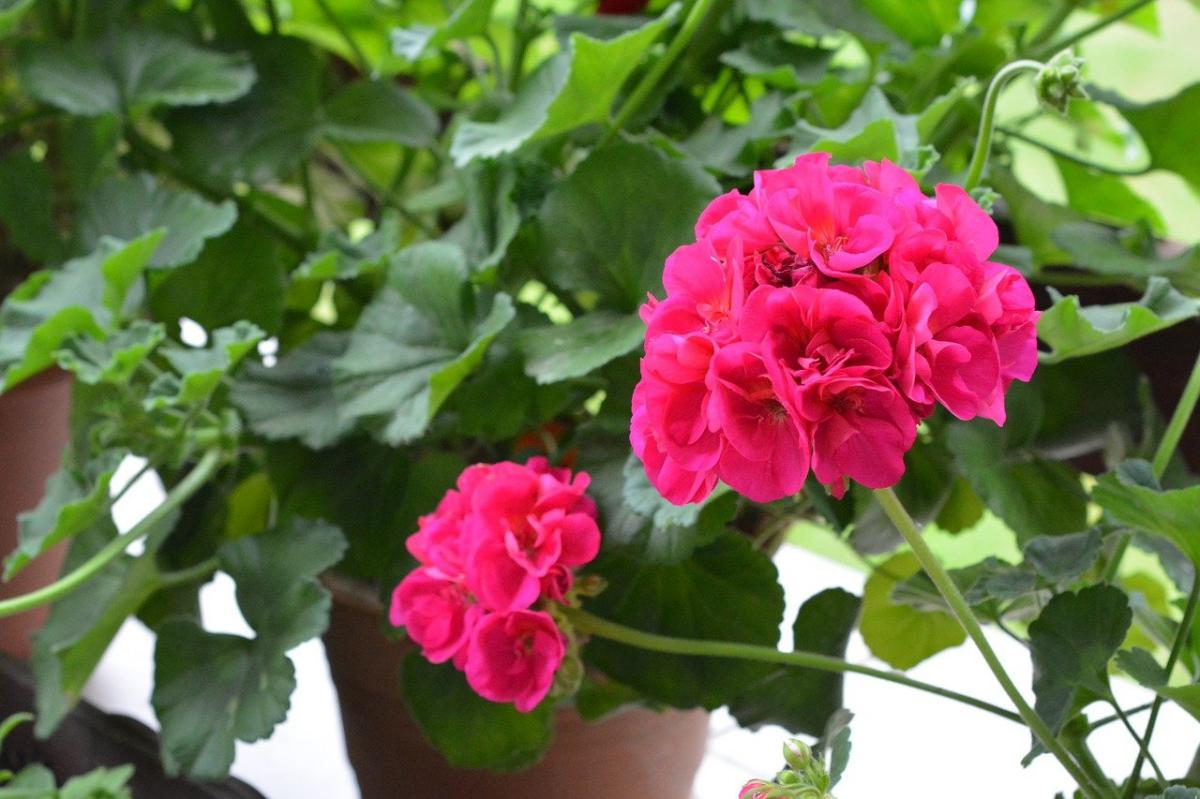
What to say about the geranium? If you have ever been to Andalusia, it is likely that you have seen its patios and balconies decorated with geranium plants. You have them with a low hanging or shrubby habit (more information in this article). And the best thing is that they bloom almost all year round, being especially beautiful in summer. They grow at a good rate, and tolerate pruning.
Of course, you have to water them frequently, because the drought seriously hurts them. In addition, it is highly recommended to prevent them from the geranium borer during the warm months, with a specific insecticide for this pest (for sale No products found.). They support up to -2ºC, but if they are a little sheltered, for example in a windless corner, it is possible that they can hold up to -3ºC.
haworthia

Image - Wikimedia / Earth100
All the haworthias they are succulent plants, or if you prefer non-cactaceous succulents, which are characterized by rosette shapes of more or less triangular leaves and greenish colors. About 60 varieties are known, the most popular being the Haworthia cymbiformis or the Haworthia attenuata, among other. The most interesting thing is that do not exceed 30 centimeters in height.
In addition, they produce many suckers, so they are ideal to have in pots that are wider than they are tall, as well as in planters. It resists drought very well, but not waterlogging, which is why it is important to use substrates that drain water very well, such as the pumice (for sale here), and that it be watered very occasionally. Supports up to -3ºC.
Hydrangea (Hydrangea macrophylla)
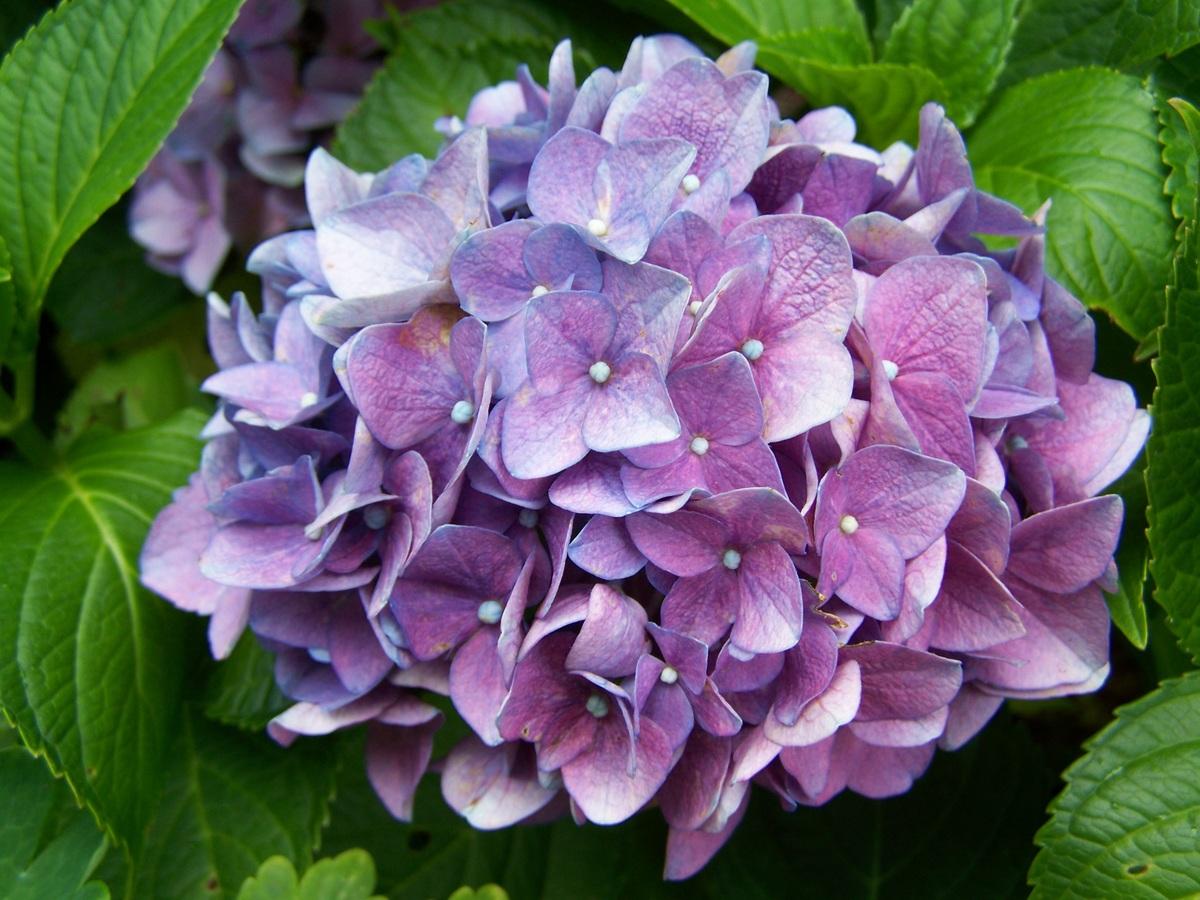
La hydrangea is a deciduous shrub that reaches a height of 1 to 3 meters. It is a plant widely used to decorate balconies, as it adapts very well to living in pots or planters. Its inflorescences, that is, groups of flowers, sprout from spring to almost autumn, and are pink or bluish in color.
Use substrates for acidic plants, as this will prevent it from having chlorosis. It is also necessary that it be watered with acidic water, which has a pH between 4 and 6. For the rest, you should know that it supports cold and weak frosts, but it is better that it is not without protection if it falls below -3ºC.
nephrolepis
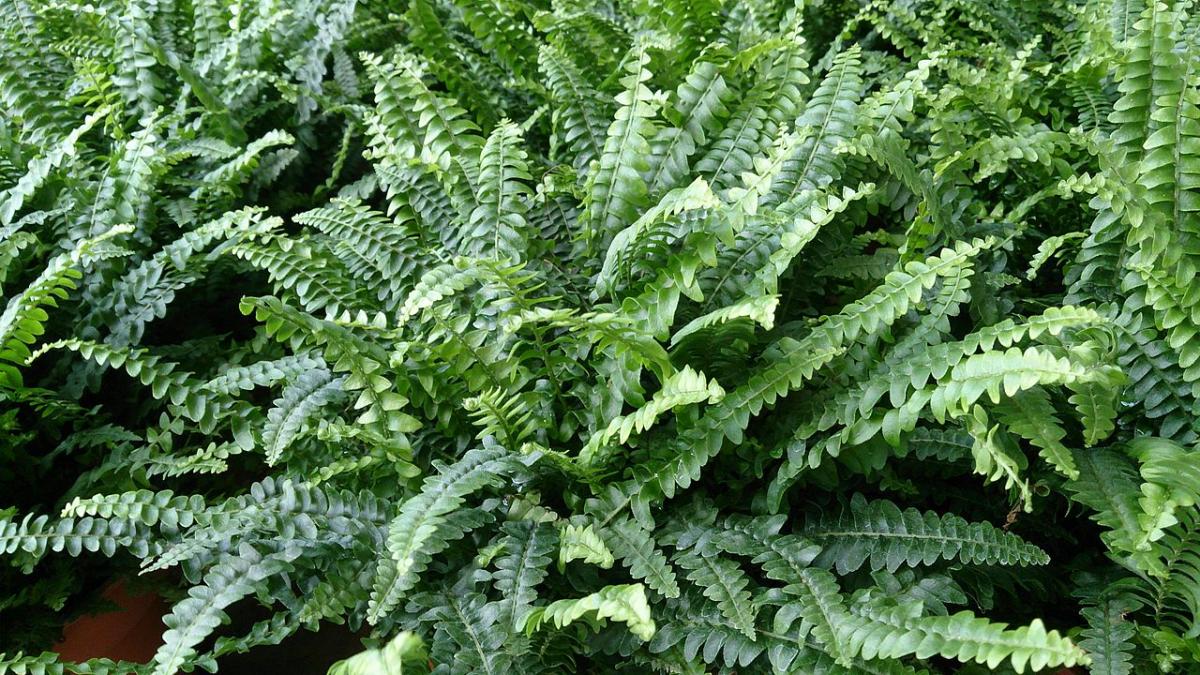
Image - Wikimedia / Mokkie
nephrolepis is the name of the botanical genus of ferns that are widely grown indoors, but they look great on the balcony too, especially the nephrolepis high, which is the common. Its fronds, that is, the leaves, are green in color, and have an approximate height of 40-60 centimeters. They do not produce flowers, as they are primitive plants of the gymnosperm group.
When growing them, it is important that they are placed in a place where the sun never hits them, otherwise their fronds would burn. As a substrate, the universal will be used as long as it is of quality (for sale here), or mulch. Water them two to three times a week in summer, and a little less in winter. They support up to -3ºC.
Which of these sunless balcony plants did you like the most?